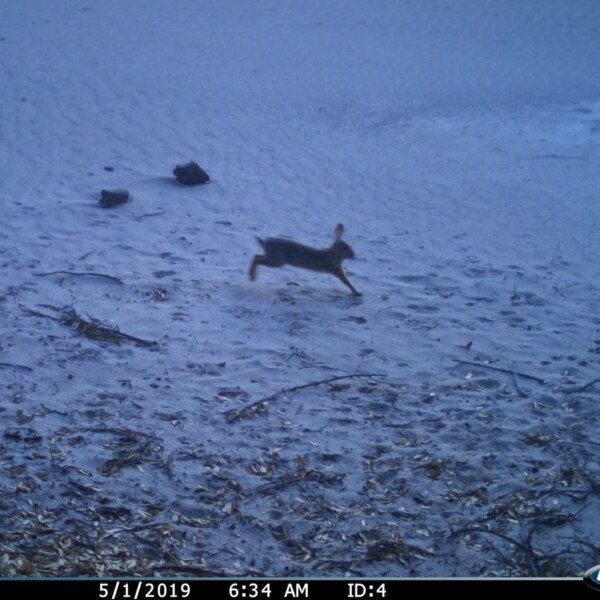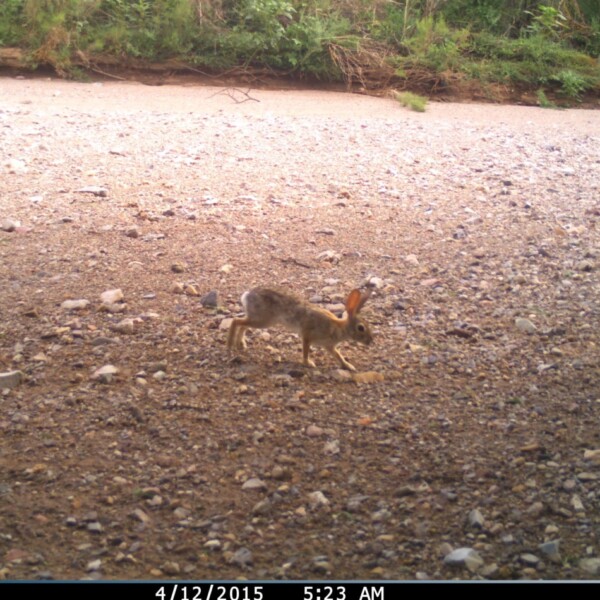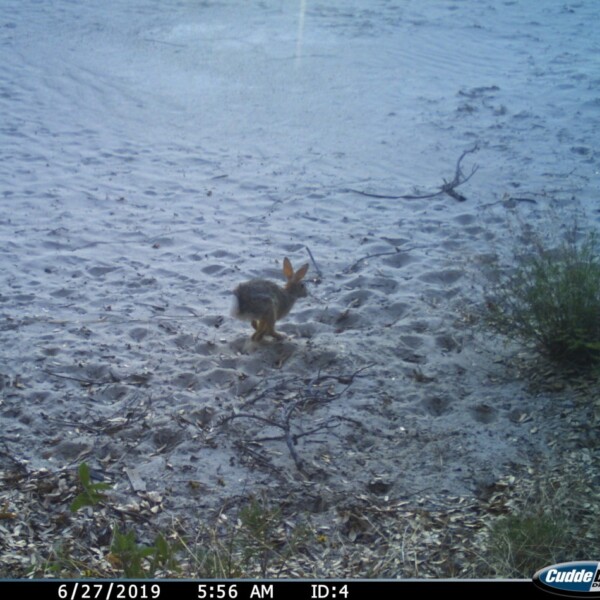Continuing our lagomorph series of creature features, this week we are leaving the hares and go to the other group, the rabbits!
Rabbits and Jackrabbits are genetic cousins but are not in the same genus. Besides size and appearance, the main difference between the two groups is how they raise their young. As we discussed in the jackrabbit features, hares are born precocial, with their eyes open and ready to fend for themselves. However, on the other hand, rabbits are born naked and helpless and require their mother’s dedicated attention.
In the Sky Island region, the most common cottontail rabbit seen on our cameras is the desert cottontail (Sylvilagus audubonii). Cottontails are the most common because they can produce 5 litters a year of 1-5 young, that’s a lot of baby bunnies! Cottontails are often found in thickets of vegetation in the desert and a common occurrence in urban settings. They are herbivorous, with grass being the largest part of their diet so they gravitate to lawns, but they also eat leaves, fruits, and seeds.
Desert cottontails are an important food source to most large predators in the region. So, to try and avoid being eaten, cottontails are crepuscular, meaning they are active in the low light of dusk and dawn.
But don’t fret for the desert cottontail, they are listed as Least Concern according to the IUCN Red List. Their strategy of producing so many young allows the cottontail to thrive.
Sources:



